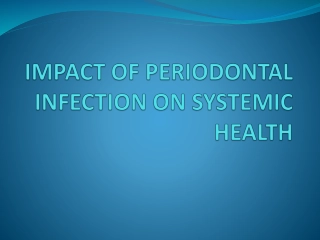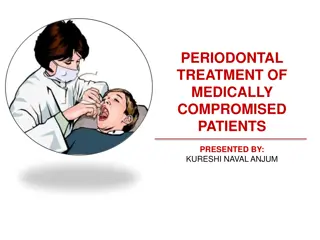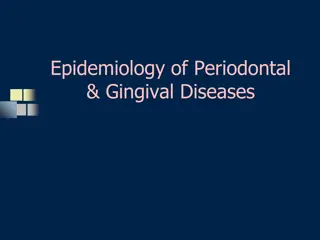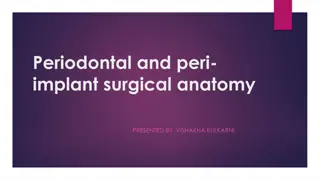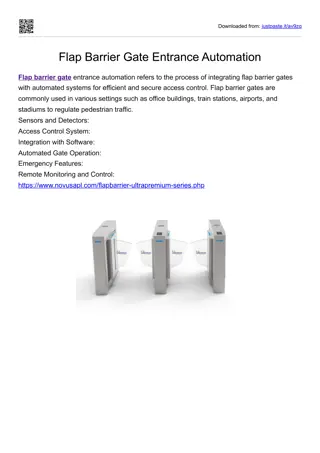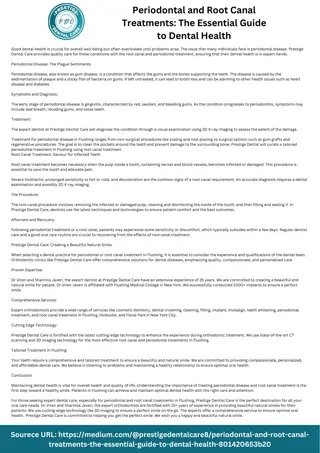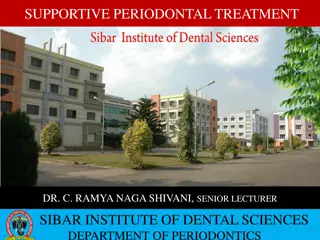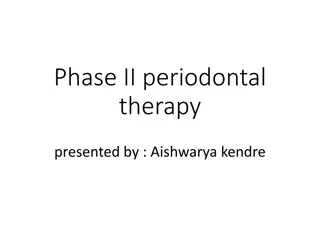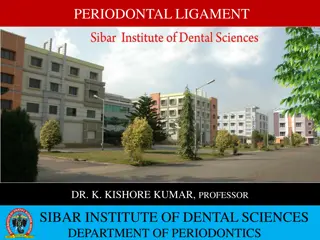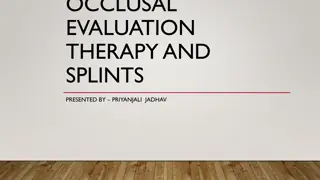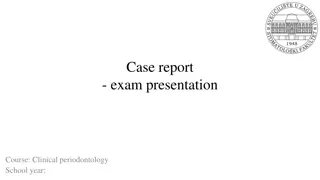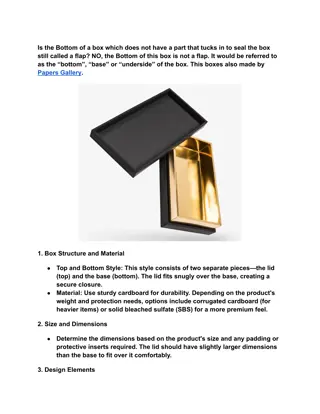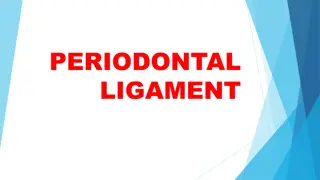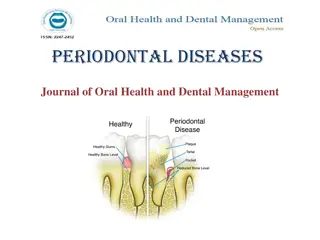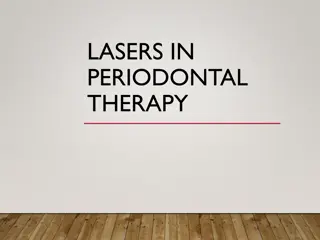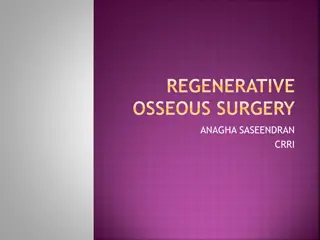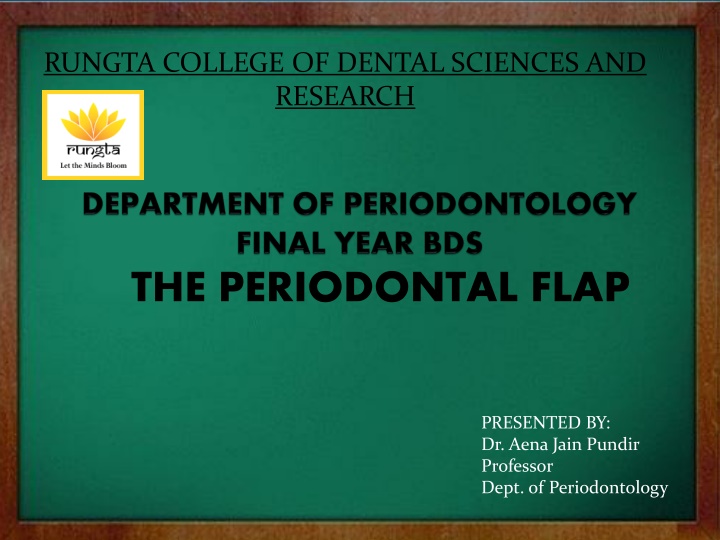
Periodontal Flap Techniques in Dental Surgery
Explore the intricacies of periodontal flap techniques in dental surgery, including the classification based on bone exposure, flap placement after surgery, and management of the papilla. Learn about full thickness and partial thickness flaps, as well as the importance of proper flap placement for optimal outcomes.
Download Presentation

Please find below an Image/Link to download the presentation.
The content on the website is provided AS IS for your information and personal use only. It may not be sold, licensed, or shared on other websites without obtaining consent from the author. If you encounter any issues during the download, it is possible that the publisher has removed the file from their server.
You are allowed to download the files provided on this website for personal or commercial use, subject to the condition that they are used lawfully. All files are the property of their respective owners.
The content on the website is provided AS IS for your information and personal use only. It may not be sold, licensed, or shared on other websites without obtaining consent from the author.
E N D
Presentation Transcript
RUNGTA COLLEGE OF DENTAL SCIENCES AND RESEARCH THE PERIODONTAL FLAP PRESENTED BY: Dr. Aena Jain Pundir Professor Dept. of Periodontology
Specific Learning Objectives Core areas Domain Category Introduction Affective Desire to know Classification Cognitive Nice to know Incisions Psychomotor Must know Flap techniques for pocket therapy Psychomotor Must know
Contents Introduction Classification Incisions Flap techniques for pocket therapy Conclusion references
A periodontal flap is a section of gingiva and/or mucosa surgically separated from the underlying tissues to provide visibility of and access to the bone and root surface. Periodontal flaps can be classified based on the following: I. Bone exposure after flap reflection. II. Placement of flap after surgery. III. Management of the papilla.
I. BASED ON BONE EXPOSURE AFTER REFLECTION: A. Full thickness flaps : also known as mucoperiosteal flap. All the soft tissue including periosteum is reflected to expose underlying bone. Indicated when resective osseous surgery is comtemplated. B. Partial thickness flaps : also called as split thickness flap. Includes epithelium and a underlying layer of connective tissue. Bone remains covered by a layer of connective tissue including periosteum. Indicated when bone exposure is not required or flap is to be ositioned apically.
II. BASED ON FLAP PLACEMENT AFTER SURGERY: Nondisplaced flaps: when flap is returned and sutured in its A. original position. Displaced flaps: which are placed apically, coronally or laterally to B. their original position.
III. BASED ON THE MANAGEMENT OF PAPILLA: A. CONVENTIONAL FLAP: interdental papilla is split beneath the contact point of the two approximating teeth to allow reflection of the buccal and lingual flaps. Indicated when interdental spaces are too narrow and when flap is to be displaced apically. B. PAPILLA PRESERVATION FLAP:incorporates the entire papilla in one of the flaps. Indicated when wide interdental space is present.
INCISIONS HORIZON VERTICAL Horizontal incisions are directed along the margin of the gingiva in a mesial or distal direction. Vertical used on one or both ends of the horizontal incision. TAL Crevicular incision Interdental incision Internal bevel incision
INTERNAL BEVEL INCISION It is basic incision to most periodontal flap procedures, starts at a distance from gingival margin and is aimed at the bone crest. It is the incision from which the flap is reflected to expose underlying bone and root. It is termed as First Incision because it is the intial incision in reflection of periodontal flap. It is also termed as Reverse Bevel Incisionbecause its bevel is in reverse direction from gingivectomy incision.
It produces a sharp, thin flap margin for adaptation to bone tooth junction. OBJECTIVES OF INTERNAL BEVEL INCISION: It removes pocket lining. It conserves relatively uninvolved outer surface of gingiva, which if apically positioned becomes attached gingival. It produces a sharp, thin flap margin for adaptation to the bone-tooth junction. INSTRUMENTS USED: #15 or #15C surgical blade is used.
It starts from a designated area on gingiva and is directed to an area at or near the crest of bone. The starting point is determined by whether the flap is to be displaced apically (by stepping back from margin and scalloping the flap) or not. The internal bevel (first) incision can be made at varying locations and angles according to the different anatomic and pocket situations.
CREVICULAR INCISION Also known as Second Incision. It is made from the base of the pocket to the crest of bone. This incision together with initial reverse bevel incision forms a V- shaped wedge ending at or near the crest of bone. This wedge of tissue contains most of inflamed and granulomatous area which constitute lateral wall of pocket and as well as the junctional epithelium and connective tissue fibers. The incision is carried out with beak shaped #12D blade.
INTERDENTAL INCISION Also known as THIRD INCISION It is given to separate the collar of gingiva left around the tooth. It is made not only on facial or lingual surface but also interdentally to free gingiva completely around the tooth. Orban knife is used for this incision.
The first (internal bevel), second (crevicular), and third (interdental) incisions are the three incisions necessary for flap surgery
THE FLAP TECHNIQUE FOR POCKET THERAPY
FLAPS ARE USED FOR POCKET THERAPY TO ACCOMPLISH THE FOLLOWING: 1. Increase accessibility to root deposits. 2. Eliminate or reduce pocket depth by resection of the pocket wall. 3. Expose the area to perform regenerative methods.
Techniques for Access and Pocket Depth Reduction/Elimination The Modified Widman flap facilitates instrumentation but does not attempt to reduce pocket depth. The reduction or elimination of pocket depth is the main purpose of two flap techniques: UNDISPLACED FLAP APICALLY DISPLACED FLAP
MODIFIED WIDMAN FLAP
Step 1: The initial incision is an internal bevel incision to the alveolar crest starting 0.5 to 1 mm away from the gingival margin. Scalloping follows the gingival margin. Step 2: The gingiva is reflected with a periosteal elevator. Step 3: A crevicular incision is made from the bottom of the pocket to the bone, circumscribing the triangular wedge of tissue containing the pocket lining. Step 4: After the flap is reflected, a third incision is made in the interdental spaces coronal to the bone with a curette or an interproximal knife, and the gingival collar is removed.
Step 5: Tissue tags and granulation tissue are removed with a curette. The root surfaces are checked, then scaled and planed if needed. Step 6: Bone architecture is not corrected except if it prevents good tissue adaptation to the necks of the teeth. Every effort is made to adapt the facial and lingual interproximal tissue adjacent to each other in such a way that no interproximal bone remains exposed at the time of suturing. Step 7: Interrupted direct sutures are placed in each interdental space and covered with periodontal surgical pack.
UNDISPLACED FLAP The undisplaced flap may be the most frequently performed type of periodontal surgery. The soft tissue pocket wall is removed with the initial incision; thus it may be considered an INTERNAL BEVEL GINGIVECTOMY. To perform this technique without creating a mucogingival problem, the clinician should determine that enough attached gingiva will remain after removal of the pocket wall.
Step 1: The pockets are measured with the periodontal probe, and a bleeding point is produced on the outer surface of the gingiva to mark the pocket bottom. Step 2: The initial or internal bevel incision is made after the scalloping of the bleeding marks on the gingiva. The incision is usually carried to a point apical to the alveolar crest, depending on the thickness of the tissue. The thicker the tissue, the more apical is the ending point of the incision.
Step 3: The second, or crevicular, incision is made from the bottom of the pocket to the bone to detach the connective tissue from the bone. Step 4: The flap is reflected with a periosteal elevator (blunt dissection) from the internal bevel incision. Usually there is no need for vertical incisions because the flap is not displaced apically. Step 5: The third, or interdental, incision is made with an interdental knife, separating the connective tissue from the bone. Step 6: The triangular wedge of tissue created by the three incisions is removed with a curette.
Step 7: The area is debrided, removing all tissue tags and granulation tissue using sharp curettes. Step 8: After the necessary scaling and root planing, the flap edge should rest on the root-bone junction. Step 9: A continuous sling suture is used to secure the facial and the lingual or palatal flaps.The area is covered with a periodontal pack. Diagram the location of two different areas where the internal bevel incision is made in an undisplaced flap showing
APICALLY DISPLACED FLAP The apically displaced flap technique can be used for (1) pocket eradication (2) widening the zone of attached gingiva. Depending on the purpose, it can be : FULL-THICKNESS (MUCOPERIOSTEAL) FLAP SPLIT-THICKNESS (MUCOSAL) FLAP
Step 1: An internal bevel incision is made no more than about 1 mm from the crest of the gingiva and directed to the crest of the bone. The incision is made after the existing scalloping, and there is no need to mark the bottom of the pocket in the external gingival surface because the incision is unrelated to pocket depth. Step 2: Crevicular incisions are made, followed by initial elevation of the flap; then interdental incisions are performed, and the wedge of tissue that contains the pocket wall is removed.
Step 3: Vertical incisions are made extending beyond the mucogingival junction. Step 4: After removal of all granulation tissue, scaling and root planing, and osseous surgery if needed, the flap is displaced apically. Step 5: If a full-thickness flap was performed, a sling suture is given. A partial-thickness flap is sutured to the periosteum using a direct loop suture or a combination of loop and anchor suture. Periodontal pack is given.
PAPILLA PRESERVATION FLAP The technique for employing a papilla preservation flap is as follows: Step 1: A crevicular incision is made around each tooth with no incisions across the interdental papilla. Step 2: The preserved papilla can be incorporated into the facial or lingual/palatal flap, the lingual or palatal incision consists of a semilunar incision across the interdental papilla in its palatal or lingual aspect; this incision dips apically from the line angles of the tooth so that the papillary incision is at least 5 mm from the crest of the papilla.
Step 3: An Orban knife is then introduced into this incision to sever half to two-thirds the base of the interdental papilla. The papilla is then dissected from the lingual or palatal aspect and elevated intact with the facial flap. Step 4: The flap is reflected without thinning the tissue.
Summary Various surgical procedures are being done as treatment of periodontitis. Initial step of any surgery being done is incision and its very crucial to reflect a proper flap as required according to the adviced procedure. All incisions have its advantages and disadvantages. Proper knowledge and skill of a clinician is required for successful treatment.
References Newman MG, Takei HH, Klokkevold PR, Carranza FA. Carranza s clinical periodontology, 10th ed. Saunders Elsevier; 2007. Lindhe J, Lang NP and Karring T. Clinical Periodontology and Implant Dentistry. 6th ed. Oxford (UK): Blackwell Publishing Ltd.; 2015.

